- Home
- Philip Pullman
The Amber Spyglass hdm-3 Page 11
The Amber Spyglass hdm-3 Read online
Page 11
And as soon as they were alone, Will showed Iorek how the other edge of the knife worked. He opened a world where a tropical rain forest steamed and dripped, and where vapors laden with heavy scent drifted out into the thin mountain air. Iorek watched closely, and touched the edge of the window with his paw, and sniffed at it, and stepped through into the hot, moist air to look around in silence. The monkey shrieks and birdcalls, the insect scrapings and frog croakings, and the incessant drip-drip of condensing moisture sounded very loud to Will, outside it.
Then Iorek came back and watched Will close the window, and asked to see the knife again, peering so closely at the silver edge that Will thought he was in danger of cutting his eye. He examined it for a long time and handed it back with hardly a word, only saying, "I was right: I could not have fought this."
They moved on, speaking little, which suited them both, Iorek Byrnison caught a gazelle and ate most of it, leaving the tender meat for Will to cook; and once they came to a village, and while Iorek waited in the forest, Will exchanged one of his gold coins for some flat, coarse bread and some dried fruit, and for boots of yak leather and a waistcoat of a kind of sheepskin, for it was becoming cold at night.
He also managed to ask about the valley with the rainbows. Balthamos helped by assuming the form of a crow, like the daemon of the man Will was speaking to; he made the passage of understanding easier between them, and Will got directions, which were helpful and clear.
It was another three days’ walk. Well, they were getting there. And so were others.
Lord Asriel’s force, the squadron of gyropters and the zeppelin fuel tanker, had reached the opening between the worlds: the breach in the sky above Svalbard. They had a very long way to go still, but they flew without pause except for essential maintenance, and the commander, the Afric King Ogunwe, kept in twice-daily touch with the basalt fortress. He had a Gallivespian lodestone operator aboard his gyropter, and through him he was able to learn as quickly as Lord Asriel himself about what was going on elsewhere.
The news was disconcerting. The little spy, the Lady Salmakia, had watched from the shadows as the two powerful arms of the Church, the Consistorial Court of Discipline and the Society of the Work of the Holy Spirit, agreed to put their differences aside and pool their knowledge. The Society had a swifter and more skillful alethiometrist than Fra Pavel, and thanks to him, the Consistorial Court now knew exactly where Lyra was, and more: they knew that Lord Asriel had sent a force to rescue her. Wasting no time, the Court commandeered a flight of zeppelins, and that same day a battalion of the Swiss Guard began to embark aboard the zeppelins waiting in the still air beside the Lake of Geneva.
So each side was aware that the other was also making its way toward the cave in the mountains. And they both knew that whoever got there first would have the advantage, but there wasn’t much in it: Lord Asriel’s gyropters were faster than the zeppelins of the Consistorial Court, but they had farther to fly, and they were limited by the speed of their own zeppelin tanker.
And there was another consideration: whoever seized Lyra first would have to fight their way out against the other force. It would be easier for the Consistorial Court, because they didn’t have to consider getting Lyra away safely. They were flying there to kill her. The zeppelin carrying the President of the Consistorial Court was carrying other passengers as well, unknown to him. The Chevalier Tialys had received a message on his lodestone resonator, ordering him and the Lady Salmakia to smuggle themselves aboard. When the zeppelins arrived at the valley, he and the Lady were to go ahead and make their way independently to the cave where Lyra was held, and protect her as well as they could until King Ogunwe’s force arrived to rescue her. Her safety was to come above every other consideration.
Getting themselves aboard the zeppelin was hazardous for the spies, not least because of the equipment they had to carry. Apart from the lodestone resonator, the most important items were a pair of insect larvae, and their food. When the adult insects emerged, they would be more like dragon-flies than anything else, but they were not like any kind of dragonfly that the humans of Will’s world, or Lyra’s, would have seen before. They were very much larger, for one thing. The Gallivespians bred these creatures carefully, and each clan’s insects differed from the rest. The Chevalier Tialys’s clan bred powerful red-and-yellow-striped dragonflies with vigorous and brutal appetites, whereas the one the Lady Salmakia was nurturing would be a slender, fast-flying creature with an electric blue body and the power of glowing in the dark.
Every spy was equipped with a number of these larvae, which, by feeding them carefully regulated amounts of oil and honey, they could either keep in suspended animation or bring rapidly to adulthood. Tialys and Salmakia had thirty-six hours, depending on the winds, to hatch these larvae now—because that was about the time the flight would take, and they needed the insects to emerge before the zeppelins landed.
The Chevalier and his colleague found an overlooked space behind a bulkhead, and made themselves as safe as they could while the vessel was loaded and fueled; and then the engines began to roar, shaking the light structure from end to end as the ground crew cast off and the eight zeppelins rose into the night sky.
Their kind would have regarded the comparison as a mortal insult, but they were able to conceal themselves at least as well as rats. From their hiding place, the Gallivespians could overhear a good deal, and they kept in hourly touch with Lord Roke, who was aboard King Ogunwe’s gyropter.
But there was one thing they couldn’t learn any more about on the zeppelin, because the President never spoke of it: and that was the matter of the assassin, Father Gomez, who had been absolved already of the sin he was going to commit if the Consistorial Court failed in their mission. Father Gomez was somewhere else, and no one was tracking him at all.
Chapter 10. Wheels
"Yeah," said the red-haired girl, in the garden of the deserted casino. "We seen her, me and Paolo both seen her. She come through here days ago."
Father Gomez said, "And do you remember what she looked like?"
"She look hot," said the little boy. "Sweaty in the face, all right."
"How old did she seem to be?"
"About…" said the girl, considering, "I suppose maybe forty or fifty. We didn’t see her close. She could be thirty, maybe. But she was hot, like Paolo said, and she was carrying a big rucksack, much bigger than yours, this big…"
Paolo whispered something to her, screwing up his eyes to look at the priest as he did so. The sun was bright in his face.
"Yeah," said the girl impatiently, "I know. The Specters," she said to Father Gomez, "she wasn’ afraid of the Specters at all. She just walked through the city and never worried a bit. I ain’ never seen a grownup do that before, all right. She looked like she didn’ know about them, even. Same as you," she added, looking at him with a challenge in her eyes.
"There’s a lot I don’t know," said Father Gomez mildly.
The little boy plucked at her sleeve and whispered again.
"Paolo says," she told the priest, "he thinks you’re going to get the knife back."
Father Gomez felt his skin bristle. He remembered the testimony of Fra Pavel in the inquiry at the Consistorial Court: this must be the knife he meant.
"If I can," he said, "I shall. The knife comes from here, does it?"
"From the Torre degli Angeli," said the girl, pointing at the square stone tower over the red-brown rooftops. It shimmered in the midday glare. "And the boy who stole it, he kill our brother, Tullio. The Specters got him, all right. You want to kill that boy, that’s okay. And the girl—she was a liar, she was as bad as him."
"There was a girl, too?" said the priest, trying not to seem too interested.
"Lying filth," spat the red-haired child. "We nearly killed them both, but then there came some women, flying women—"
"Witches," said Paolo.
"Witches, and we couldn’ fight them. They took them away, the girl and boy. We
don’ know where they went. But the woman, she came later. We thought maybe she got some kind of knife, to keep the Specters away, all right. And maybe you have, too," she added, lifting her chin to stare at him boldly.
"I have no knife," said Father Gomez. "But I have a sacred task. Maybe that is protecting me against these—Specters."
"Yeah," said the girl, "maybe. Anyway, you want her, she went south, toward the mountains. We don’ know where. But you ask anyone, they know if she go past, because there ain’ no one like her in Ci’gazze, not before and not now. She be easy to find."
"Thank you, Angelica," said the priest. "Bless you, my children."
He shouldered his pack, left the garden, and set off through the hot, silent streets, satisfied.
After three days in the company of the wheeled creatures, Mary Malone knew rather more about them, and they knew a great deal about her.
That first morning they carried her for an hour or so along the basalt highway to a settlement by a river, and the journey was uncomfortable; she had nothing to hold on to, and the creature’s back was hard. They sped along at a pace that frightened her, but the thunder of their wheels on the hard road and the beat of their scudding feet made her exhilarated enough to ignore the discomfort.
And in the course of the ride she became more aware of the creatures’ physiology. Like the grazers’ skeletons, theirs had a diamond-shaped frame, with a limb at each of the corners. Sometime in the distant past, a line of ancestral creatures must have developed this structure and found it worked, just as generations of long-ago crawling things in Mary’s world had developed the central spine.
The basalt highway led gradually downward, and after a while the slope increased, so the creatures could freewheel. They tucked their side legs up and steered by leaning to one side or the other, and hurtled along at a speed Mary found terrifying—though she had to admit that the creature she was riding never gave her the slightest feeling of danger. If only she’d had something to hold on to, she would have enjoyed it.
At the foot of the mile-long slope, there was a stand of the great trees, and nearby a river meandered on the level grassy ground. Some way off, Mary saw a gleam that looked like a wider expanse of water, but she didn’t spend long looking at that, because the creatures were making for a settlement on the riverbank, and she was burning with curiosity to see it.
There were twenty or thirty huts, roughly grouped in a circle, made of—she had to shade her eyes against the sun to see—wooden beams covered with a kind of wattle-and-daub mixture on the walls and thatch on the roofs. Other wheeled creatures were working: some repairing a roof, others hauling a net out of the river, others bringing brushwood for a fire.
So they had language, and they had fire, and they had society. And about then she found an adjustment being made in her mind, as the word creatures became the word people. These beings weren’t human, but they were people, she told herself; it’s not them, they’re us.
They were quite close now, and seeing what was coming, some of the villagers looked up and called to each other to look. The party from the road slowed to a halt, and Mary clambered stiffly down, knowing that she would ache later on.
"Thank you," she said to her, her what? Her steed? Her cycle? Both ideas were absurdly wrong for the bright-eyed amiability that stood beside her. She settled for—friend.
He raised his trunk and imitated her words:
"Anku," he said, and again they laughed, in high spirits.
She took her rucksack from the other creature ("Anku! Anku!") and walked with them off the basalt and on to the hard-packed earth of the village.
And then her absorption truly began.
In the next few days she learned so much that she felt like a child again, bewildered by school. What was more, the wheeled people seemed to be just as wonderstruck by her. Her hands, to begin with. They couldn’t get enough of them: their delicate trunks felt over every joint, searching out thumbs, knuckles, and fingernails, flexing them gently, and they watched with amazement as she picked up her rucksack, conveyed food to her mouth, scratched, combed her hair, washed. In return, they let her feel their trunks. They were infinitely flexible, and about as long as her arm, thicker where they joined the head, and quite powerful enough to crush her skull, she guessed. The two finger-like projections at the tip were capable of enormous force and great gentleness; the creatures seemed to be able to vary the tone of their skin on the underside, on their equivalent of fingertips, from a soft velvet to a solidity like wood. As a result, they could use them for both a delicate task like milking a grazer and the rough business of tearing and shaping branches.
Little by little, Mary realized that their trunks were playing a part in communication, too. A movement of the trunk would modify the meaning of a sound, so the word that sounded like "chuh" meant water when it was accompanied by a sweep of the trunk from left to right, rain when the trunk curled up at the tip, sadness when it curled under, and young shoots of grass when it made a quick flick to the left. As soon as she saw this, Mary imitated it, moving her arm as best she could in the same way, and when the creatures realized that she was beginning to talk to them, their delight was radiant.
Once they had begun to talk (mostly in the wheeled people’s language, although she managed to teach them a few words of English: they could say "anku" and "grass" and "tree" and "sky" and "river," and pronounce her name, with a little difficulty) they progressed much more quickly. Their word for themselves as a people was mulefa, but an individual was a zalif. Mary thought there was a difference between the sounds for he-zalif and she-zalif, but it was too subtle for her to imitate easily. She began to write it all down and compile a dictionary.
But before she let herself become truly absorbed, she took out her battered paperback and the yarrow stalks, and asked the I Ching: Should I be here doing this, or should I go on somewhere else and keep searching?
The reply came: Keeping still, so that restlessness dissolves; then, beyond the tumult, one can perceive the great laws.
It went on: As a mountain keeps still within itself, thus a wise man does not permit his will to stray beyond his situation.
That could hardly be clearer. She folded the stalks away and closed the book, and then realized that she’d drawn a circle of watching creatures around her.
One said, Question? Permission? Curious.
She said, Please. Look.
Very delicately their trunks moved, sorting through the stalks in the same counting movement she’d been making, or turning the pages of the book. One thing they were astonished by was the doubleness of her hands: by the fact that she could both hold the book and turn the pages at the same time. They loved to watch her lace her fingers together, or play the childhood game of "This is the church, and this is the steeple," or make that over-and-over thumb-to-opposite forefinger movement that was what Ama was using, at exactly the same moment in Lyra’s world, as a charm to keep evil spirits away.
Once they had examined the yarrow stalks and the book, they folded the cloth over them carefully and put them with the book into her rucksack. She was happy and reassured by the message from ancient China, because it meant that what she wanted most to do was exactly, at that moment, what she should do.
So she set herself to learning more about the mulefa, with a cheerful heart.
She learned that there were two sexes, and that they lived monogamously in couples. Their offspring had long childhoods—ten years at least—growing very slowly, as far as she could interpret their explanation. There were five young ones in this settlement, one almost grown and the others somewhere in between, and being smaller than the adults, they could not manage the seedpod wheels. The children had to move as the grazers did, with all four feet on the ground, but for all their energy and adventurousness (skipping up to Mary and shying away, trying to clamber up tree trunks, floundering in the shallow water, and so on), they seemed clumsy, as if they were in the wrong element. The speed and power and grace of the a
dults was startling by contrast, and Mary saw how much a growing youngster must long for the day when the wheels would fit. She watched the oldest child, one day, go quietly to the storehouse where a number of seedpods were kept, and try to fit his foreclaw into the central hole; but when he tried to stand up, he fell over at once, trapping himself, and the sound attracted an adult. The child struggled to get free, squeaking with anxiety, and Mary couldn’t help laughing at the sight, at the indignant parent and the guilty child, who pulled himself out at the last minute and scampered away.
The seedpod wheels were clearly of the utmost importance, and soon Mary began to see just how valuable they were.
The mulefa spent much of their time, to begin with, in maintaining their wheels. By deftly lifting and twisting the claw, they could slip it out of the hole, and then they used their trunks to examine the wheel all over, cleaning the rim, checking for cracks. The claw was formidably strong: a spur of horn or bone at right angles to the leg, and slightly curved so that the highest part, in the middle, bore the weight as it rested on the inside of the hole. Mary watched one day as a zalif examined the hole in her front wheel, touching here and there, lifting her trunk up in the air and back again, as if sampling the scent.
Mary remembered the oil she’d found on her fingers when she had examined the first seedpod. With the zalif ’s permission she looked at her claw, and found the surface more smooth and slick than anything she’d felt on her world. Her fingers simply would not stay on the surface. The whole of the claw seemed impregnated with the faintly fragrant oil, and after she had seen a number of the villagers sampling, testing, checking the state of their wheels and their claws, she began to wonder which had come first: wheel or claw? Rider or tree?
Although of course there was a third element as well, and that was geology. Creatures could only use wheels on a world that provided them with natural highways. There must be some feature of the mineral content of these stone roads that made them run in ribbon-like lines over the vast savanna, and be so resistant to weathering or cracking. Little by little, Mary came to see the way everything was linked together, and all of it, seemingly, managed by the mulefa. They knew the location of every herd of grazers, every stand of wheel trees, every clump of sweet grass, and they knew every individual within the herds, and every separate tree, and they discussed their well-being and their fate. On one occasion she saw the mulefa cull a herd of grazers, selecting some individuals and herding them away from the rest, to dispatch them by breaking their necks with a wrench of a powerful trunk. Nothing was wasted. Holding flakes of razor-sharp stone in their trunks, the mulefa skinned and gutted the animals within minutes, and then began a skillful butchery, separating out the offal and the tender meat and the tougher joints, trimming the fat, removing the horns and the hooves, and working so efficiently that Mary watched with the pleasure she felt at seeing anything done well.

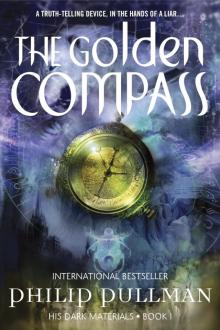 The Golden Compass
The Golden Compass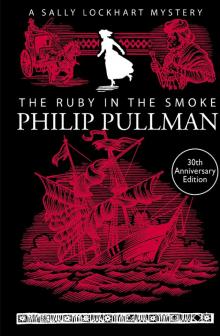 The Ruby in the Smoke
The Ruby in the Smoke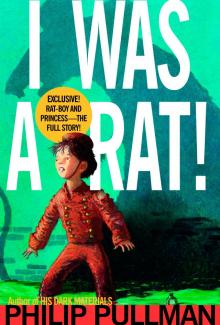 I Was a Rat!
I Was a Rat!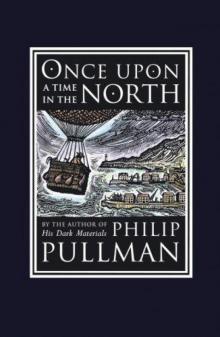 Once Upon a Time in the North
Once Upon a Time in the North The Tiger in the Well
The Tiger in the Well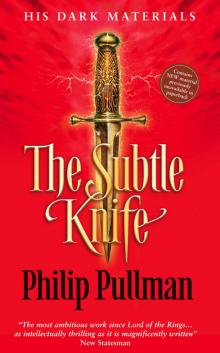 The Subtle Knife
The Subtle Knife The Butterfly Tattoo
The Butterfly Tattoo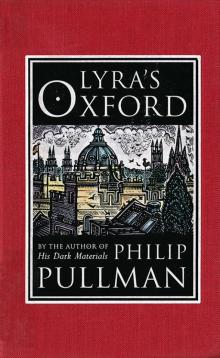 Lyra's Oxford
Lyra's Oxford The Broken Bridge
The Broken Bridge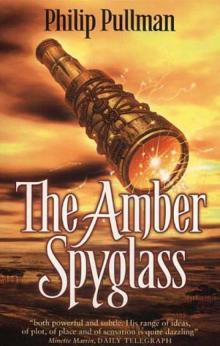 The Amber Spyglass
The Amber Spyglass Count Karlstein
Count Karlstein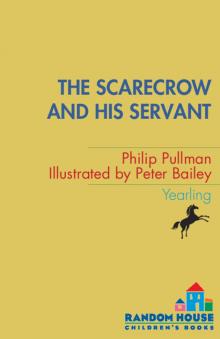 The Scarecrow and His Servant
The Scarecrow and His Servant The Shadow in the North
The Shadow in the North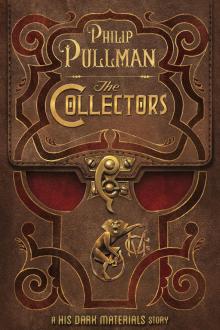 The Collectors
The Collectors The Good Man Jesus and the Scoundrel Christ
The Good Man Jesus and the Scoundrel Christ La Belle Sauvage
La Belle Sauvage The Tin Princess
The Tin Princess The Firework-Maker's Daughter
The Firework-Maker's Daughter The Book of Dust: The Secret Commonwealth (Book of Dust, Volume 2)
The Book of Dust: The Secret Commonwealth (Book of Dust, Volume 2)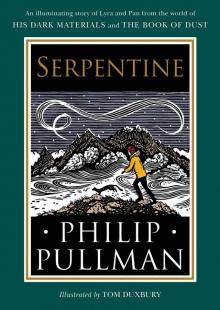 Serpentine
Serpentine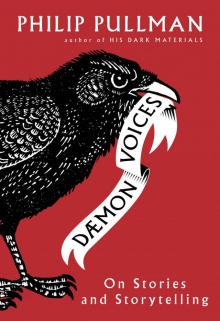 Daemon Voices
Daemon Voices The Amber Spyglass: His Dark Materials
The Amber Spyglass: His Dark Materials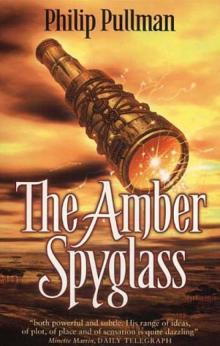 The Amber Spyglass hdm-3
The Amber Spyglass hdm-3 The Haunted Storm
The Haunted Storm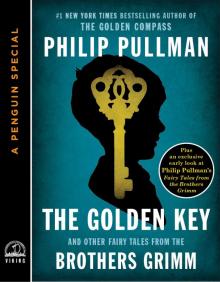 The Golden Key
The Golden Key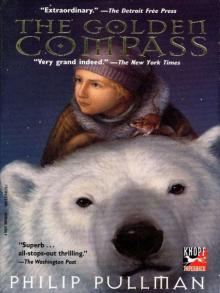 His Dark Materials 01 - The Golden Compass
His Dark Materials 01 - The Golden Compass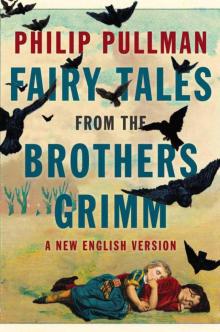 Fairy Tales from the Brothers Grimm: A New English Version
Fairy Tales from the Brothers Grimm: A New English Version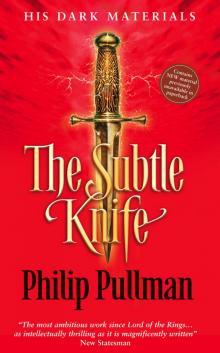 His Dark Materials 02 - The Subtle Knife
His Dark Materials 02 - The Subtle Knife Spring-Heeled Jack
Spring-Heeled Jack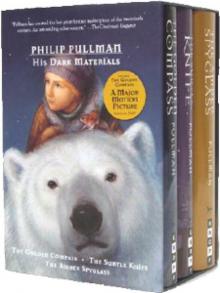 The Golden Compass hdm-1
The Golden Compass hdm-1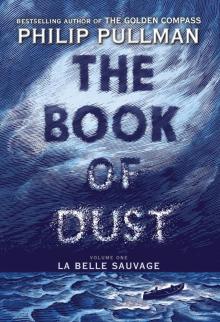 The Book of Dust, Volume 1
The Book of Dust, Volume 1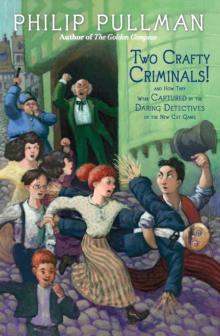 Two Crafty Criminals!
Two Crafty Criminals!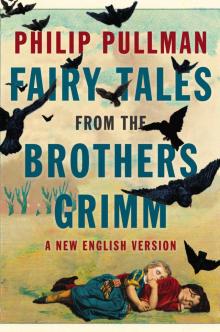 Fairy Tales from the Brothers Grimm
Fairy Tales from the Brothers Grimm The Subtle Knife: His Dark Materials
The Subtle Knife: His Dark Materials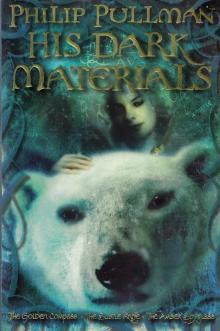 His Dark Materials Omnibus
His Dark Materials Omnibus The Golden Compass: His Dark Materials
The Golden Compass: His Dark Materials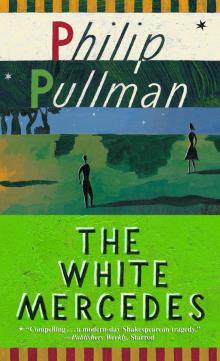 The White Mercedes
The White Mercedes